
1905 6ft 3in long Bluthner grand piano in stock. Marcus is showing the quality of the piano. This piano has a rosewood finish, polished by Blüthner in London. The grain is particularly attractive. With slight fading on one corner.
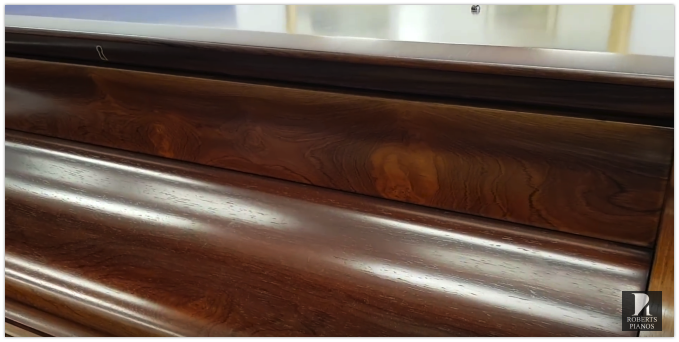
Bluthner’s refinishing is unique to Blüthner with a silky slightly open pore polish.
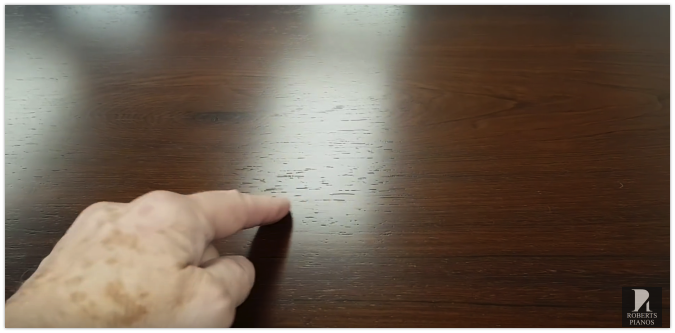
The sides show how beautiful the veneer is:

Very decorative rosewood veneer. In our opinion Blüthner use the best veneer on the market for pianos. Steinway also do an excelent rosewood that is very similar.
The keytops are replacment keytops.
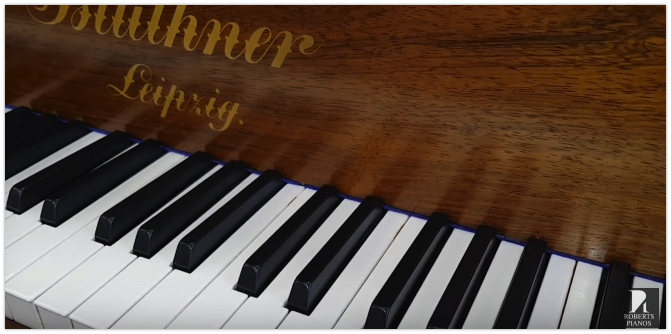
They are very well done by Blüthner themselves apparently. The piano has a a lot of history but we want to focus here on the fine regulation and things we will do to the piano ourselves.
Firstly we like to check the tightness of the tuning pins. This piano has a new wrestplank and pins. When some restorers replace the pin block they place larger pins. There is no need to do this.
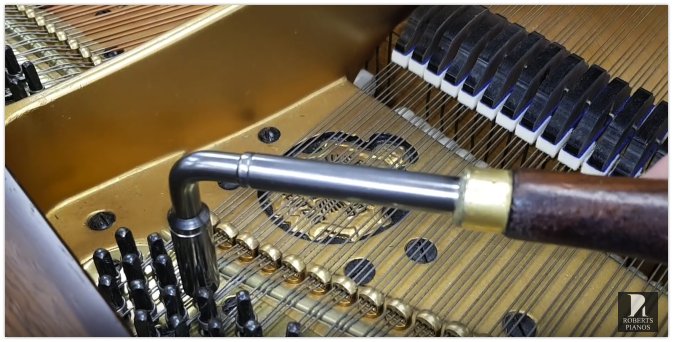
The wrest plank is multi laminate wrestplank, probably made by delegnite:

The piano was fully restored in 2005. There are signs that show it as delegnit, the main one is the that the wood is slightly patchy.
They have replaced the original patent action with a roller action and replaced the damper tray too which you have to do too if you change the action. The spoons on the damper rail make for efficient damper regulation.
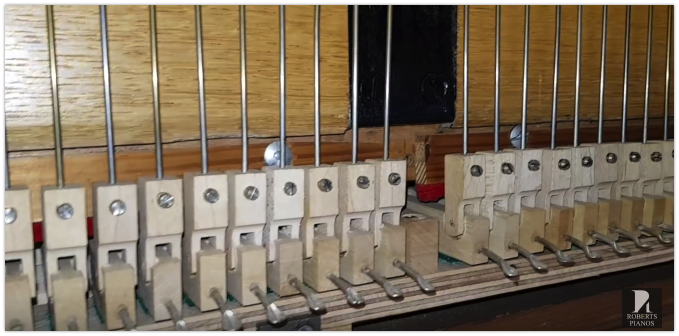
It is an extremely high quality job done here by Blüthner.
The piano has a new Schwander action made in England, with potentially some parts made in Germany:
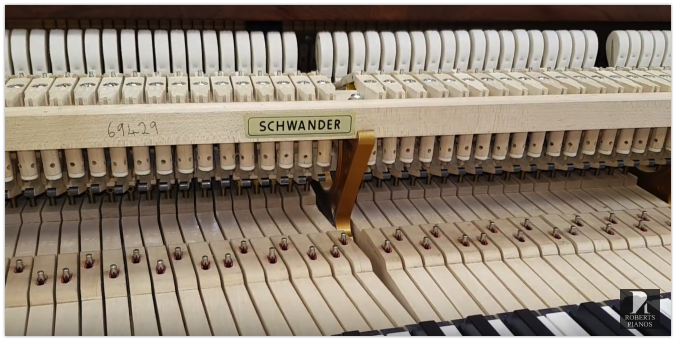
Schwander is a tremendously good firm. This action has Abel hammers and the whole action is new. If you want to see videos on patent actions, we have videos of those too for comparison.
What I want to concentrate on is the fine regulation. If you compare C and B here:
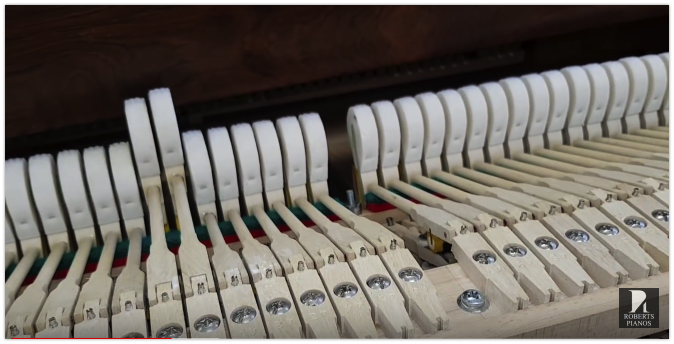
The C is fine regulated, by moving up the let-off

It was not playing as finely as it could have been. Also the drop-screw has been taken up a bit.
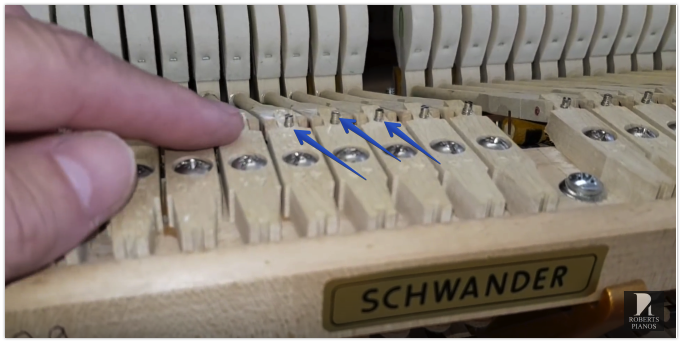
So if we watch it now B and C together you will be able to see when the hammer sets off. They go up very slowly together you will see B sets off before C. And C sets off later. A later set-off allows for very fine playing as you can control the hammer closer to the string.
I will show you how these are adjusted. We had set-up the key dip to 11mm as Marcus’ prefered key-dip. Similar to most modern keyboards:
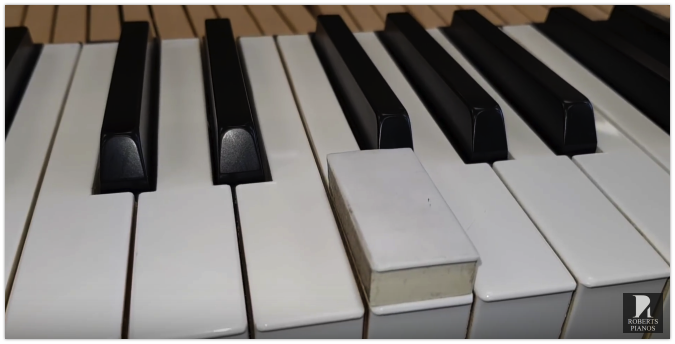
We had previously set the key dip to 11mm which gives it a nice after touch. We had also set the blow-distance to 44mm.
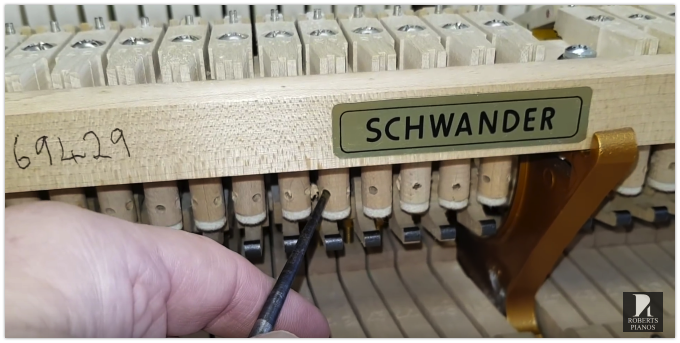
The chalk visible on the action is there to enable the roller on the hammer to move more smoothly. Which also removed the slight squeak on some notes:
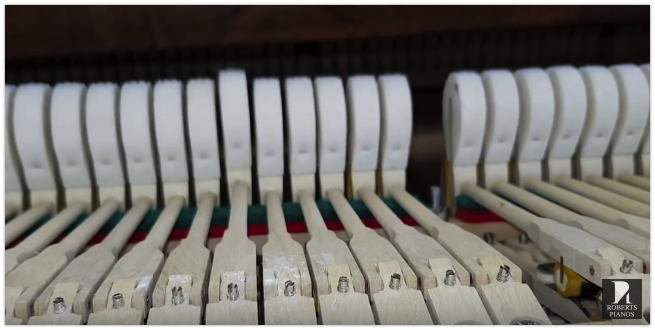
We either use French chalk or teflon powder or talk on the back of the roller for smootheness.
We also found the springs needed regulating to make the hammer go up after touch. Renner say ‘rise like the sun’ we prefere a bit more speed as this slows with age.
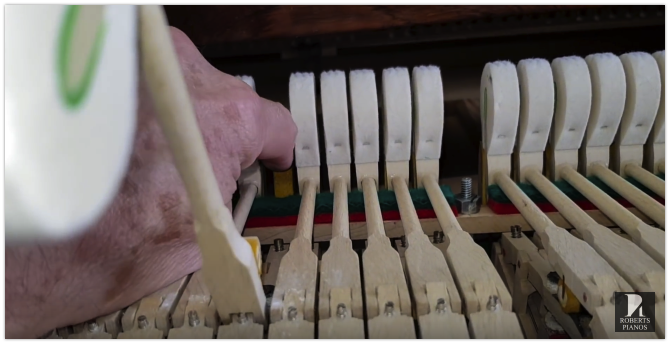
This responsive spring makes a lot of difference if you would like to play softly. Until 1905 Bluthner replaced production of patent actions with roller actions. Blüthner fully restored the piano in 2005 and it feels beautiful.
This is the screw that adjusts the spring:
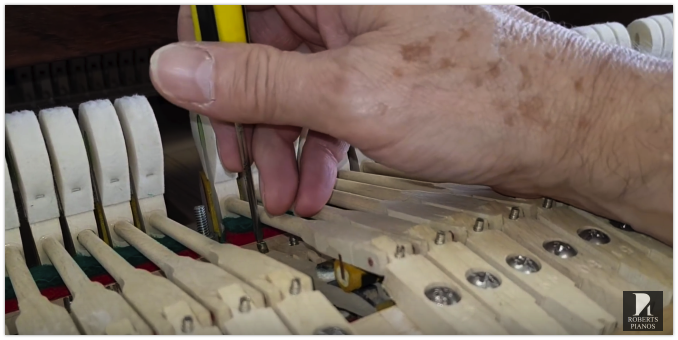
There are many fans of Blüthner because of its silky smoothness. Which can also produce power if desired. The main points, the baseline, is how a piano feels and sounds. We will do more fine regulation to even further perfect this beautiful piano.


